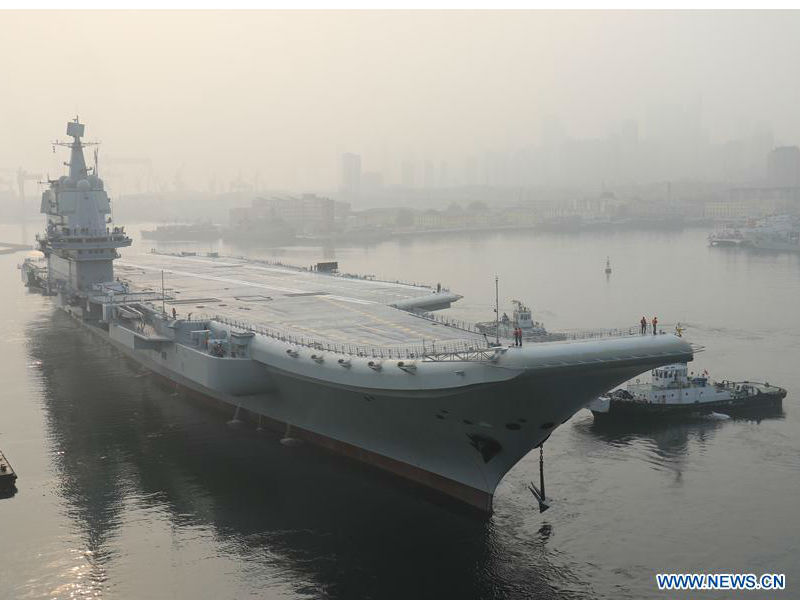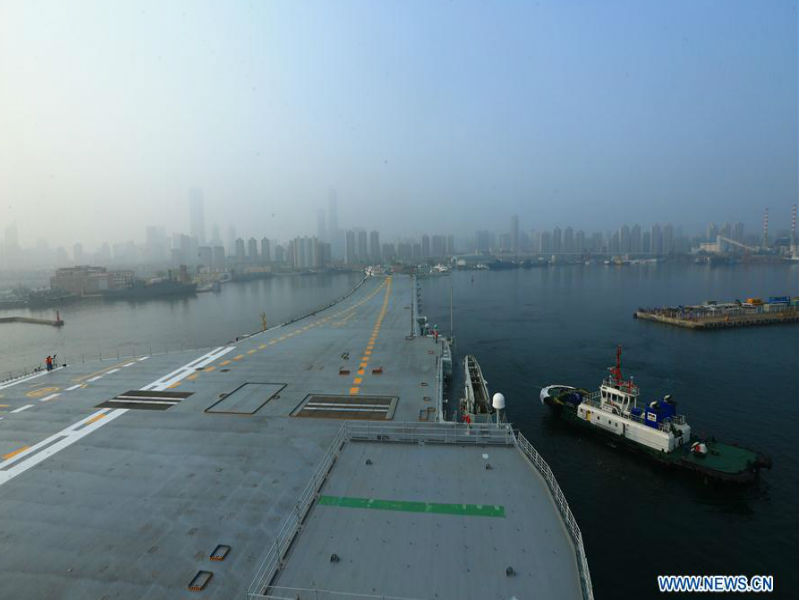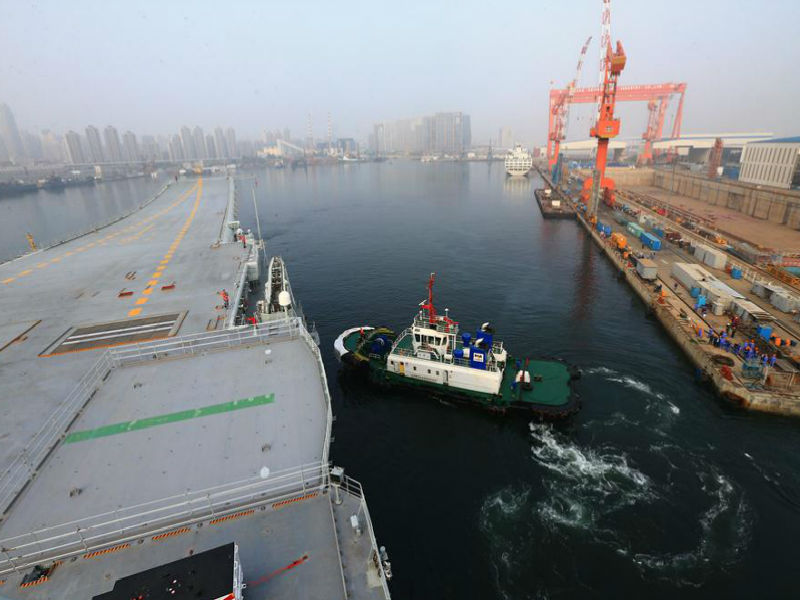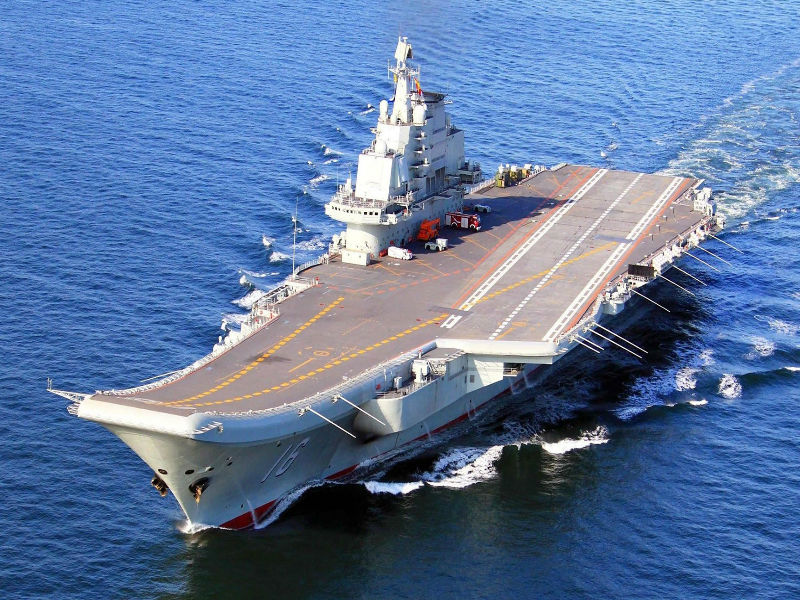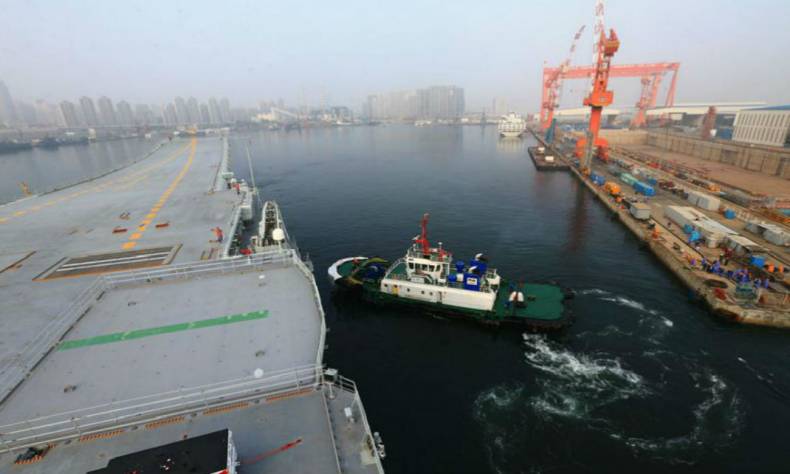
What Have Been Tested?- China’s First domestically-built Aircraft Carrier Set Out for Sea Trials
China’s first domestically-built aircraft carrier,launched for fitting-out on April 26 last year, signified that China had mastered the skills to build medium-sized and even bigger aircraft carriers. On May 13 this year, this aircraft carrier (China’s No.002) took a key stride forward when it set out for official sea trials.
By Ji Mingkui
China’s first domestically-built aircraft carrier,launched for fitting-out on April 26 last year, signified that China had mastered the skills to build medium-sized and even bigger aircraft carriers. On May 13 this year, this aircraft carrier (China’s No.002) took a key stride forward when it set out for official sea trials.
The First Aircraft CarrierNo.002 aircraft carrier is China’s first domestically-built aircraft carrier. From March 2010, when work started on laying the hull, to its launch on April 26 2017, the aircraft carrier was delivered ahead of its forecast schedule. After 11 months of sea trials, No.002 aircraft carrier is expected to officially enter service and join the naval order of battle in early 2019.
No.002 has a different design from the heavy aircraft carrier cruiser Varyag. The height of bow deck has been lowered to make it suitable for the battle needs of carrier-based aircraft, and the internal space for aircraft storage has been enlarged. No.002 has also been equipped with an advanced short range air-defense weapon system to increase its self-defence capacity.
The island has been shortened and heightened to concentrate the functions of command and expand the space for aircraft use. New methods of future deck design have been explored to allow the possibility of introducing new types of aircraft on board.
An improved fully digital phased array radar has been added to the carrier, which is better than the system on the American Nimitz-class carriers. This radar system has wider detection range, and with a modified cooling system, is more durable. It can compensate for the temporary lack of carrier-based airborne early warning (AEW) aircraft. Also, as a key sensor, phased array radar can provide better sensory capacity for the command of the aircraft carrier formation.
Sea Trials Pave Way for Official Service Next Year
The sea trials indicate that the 002 has completed its mooring testing. Its main systems including electrics, power and weapons are all functioning well. The control of its main and auxiliary engines and the signal transmission are working properly.
Figures including water temperature, water pressure, oil pressure are all at normal level. Command and control systems are complete, weapon systems, fire units, artillery, air-defense missiles and medium-and-short range missiles all work in coordination. Facilities that support navigation, life and combat within and outside the aircraft carrier are all fully equipped.
The main initial purpose of sea trials is to examine the seaworthiness of the aircraft carrier’s systems – whether the power system functions well during navigation, whether there is any leakage or fracturing of pipelines, whether movements including acceleration, deceleration and turning meet the technical standards, and whether the navigation stability of the aircraft carrier, the departure and landing of aircraft, and the condition of carrier-based weapons can withstand the influence of different waters and weathers.
During sea trials, problems can be discovered and solved. Engineers and technicians from the ship manufacturers will go on board during the trial and take careful note of every problem found during navigation. Each shoulders a clear division of work and responsibilities, and is subjected to a set time for problem solving. Once the problems are solved, the aircraft carrier can then be handed to the navy for service.
The building of No.002 aircraft carrier has also laid a solid foundation for the application of steam and electromagnetic catapults on the ensuing No.003 and 004 aircraft carriers.
Chinese Navy Now Has Two Aircraft Carriers
With China’s first aircraft carrier Liaoning already in service, once the new one is ready the Chinese navy will have two serviceable aircraft carriers and can therefore set up a standing carrier battle group (CVBG). After that China will retake its place as a maritime power endowed with true ocean-going combat capacity.
The history of the modern navy since WWⅡ has shown that aircraft carriers are a standard element of ocean-going navies, and the core of deep sea naval forces. If you want to establish an ocean-going navy, you have to build aircraft carriers, which is all the more applicable to a country like China which lacks sound ocean-going support.
China takes offshore defense as its main naval development strategy, it does not implement global deployment. Two aircraft carriers in service can promote China’s offshore combat capacity and strengthen the country’s ability to defend its maritime security. Safeguarding Chinese overseas interests during the process of globalization is also a duty of the Chinese navy. Without support of a certain number of aircraft carriers, it would be impossible to accomplish the tasks of guard duty, combat readiness, and drills.
However, we still should take a clinical view of Chinese aircraft carrier development. As a late starter, China still has plenty of room for improvement compared with other traditional aircraft carrier powers. From the launch of China’s first domestically-built aircraft carrier to taking sea trials and finally entering service, China has made a good start. But further challenges await in the future.
By Ji Mingkui, Major general of the people’s liberation army, former deputy director of Education, the National Defense University of the People’s Liberation Army
(The article represents the author’s personal opinion which does not represent the China Focus’ stance.)
 Facebook
Facebook
 Twitter
Twitter
 Linkedin
Linkedin
 Google +
Google +
